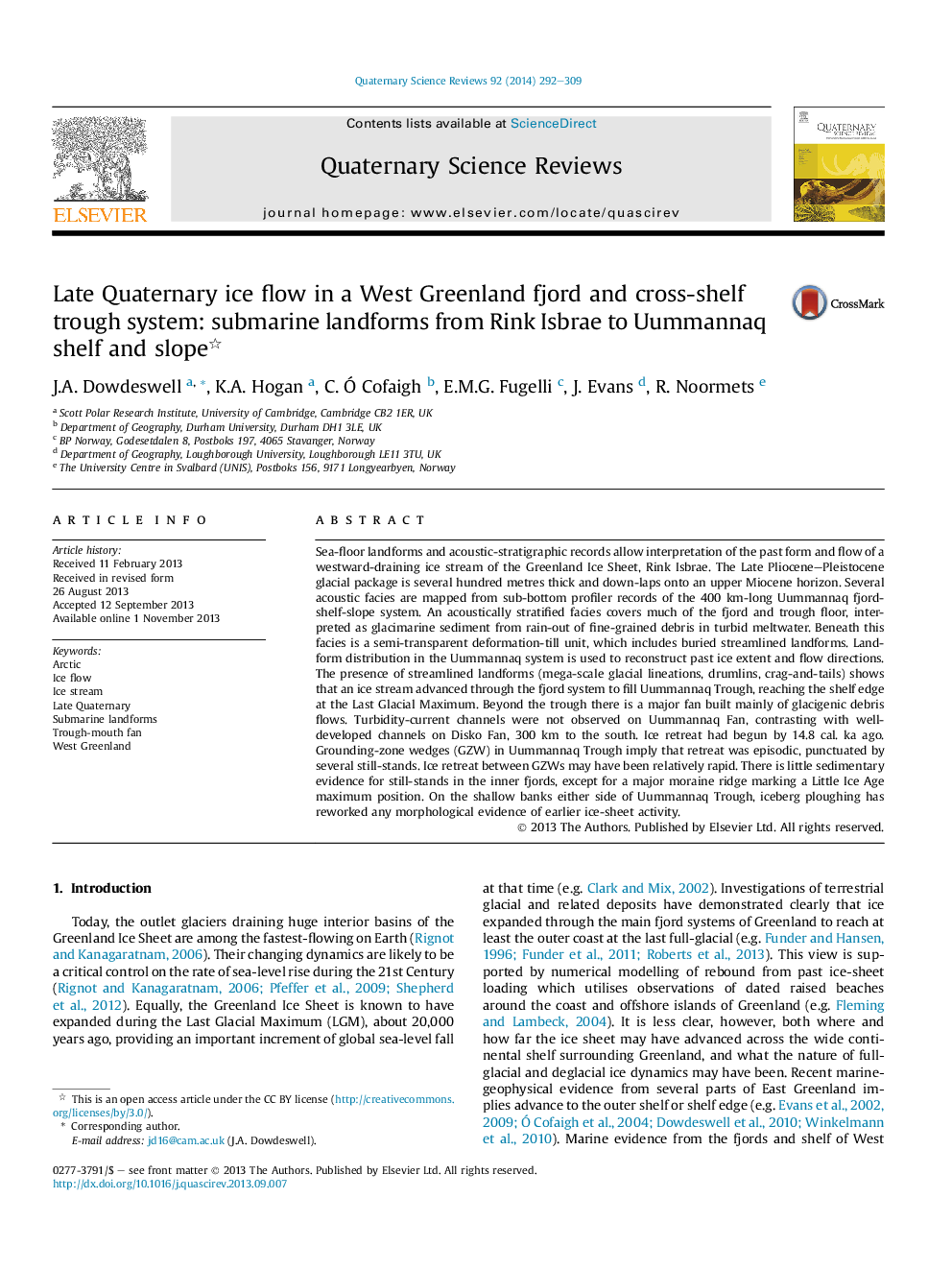| Article ID | Journal | Published Year | Pages | File Type |
|---|---|---|---|---|
| 6446367 | Quaternary Science Reviews | 2014 | 18 Pages |
Abstract
Sea-floor landforms and acoustic-stratigraphic records allow interpretation of the past form and flow of a westward-draining ice stream of the Greenland Ice Sheet, Rink Isbrae. The Late Pliocene-Pleistocene glacial package is several hundred metres thick and down-laps onto an upper Miocene horizon. Several acoustic facies are mapped from sub-bottom profiler records of the 400 km-long Uummannaq fjord-shelf-slope system. An acoustically stratified facies covers much of the fjord and trough floor, interpreted as glacimarine sediment from rain-out of fine-grained debris in turbid meltwater. Beneath this facies is a semi-transparent deformation-till unit, which includes buried streamlined landforms. Landform distribution in the Uummannaq system is used to reconstruct past ice extent and flow directions. The presence of streamlined landforms (mega-scale glacial lineations, drumlins, crag-and-tails) shows that an ice stream advanced through the fjord system to fill Uummannaq Trough, reaching the shelf edge at the Last Glacial Maximum. Beyond the trough there is a major fan built mainly of glacigenic debris flows. Turbidity-current channels were not observed on Uummannaq Fan, contrasting with well-developed channels on Disko Fan, 300 km to the south. Ice retreat had begun by 14.8 cal. ka ago. Grounding-zone wedges (GZW) in Uummannaq Trough imply that retreat was episodic, punctuated by several still-stands. Ice retreat between GZWs may have been relatively rapid. There is little sedimentary evidence for still-stands in the inner fjords, except for a major moraine ridge marking a Little Ice Age maximum position. On the shallow banks either side of Uummannaq Trough, iceberg ploughing has reworked any morphological evidence of earlier ice-sheet activity.
Related Topics
Physical Sciences and Engineering
Earth and Planetary Sciences
Geology
Authors
J.A. Dowdeswell, K.A. Hogan, C. Ã Cofaigh, E.M.G. Fugelli, J. Evans, R. Noormets,
